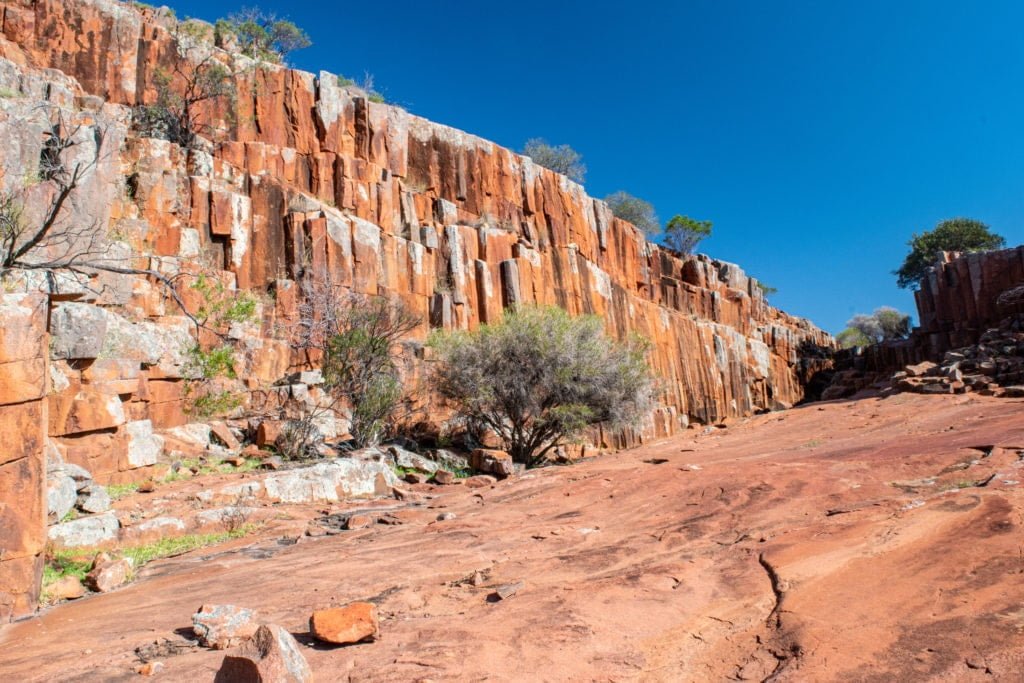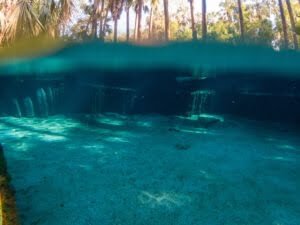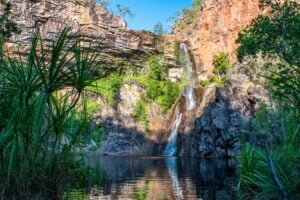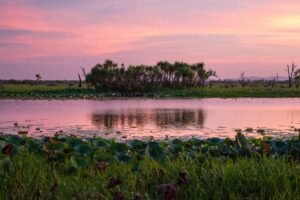In our 4ish months in Central Australia, we saw countless introduced and feral animals: rabbits, horses, donkeys, camels…but we can count on one hand how many native animals we saw during that time, which was more than a bit disappointing. Lucky for us our next stop after Alice Springs was the Gawler Ranges National Park.
Our visit to Gawler Ranges was mainly due to our volunteer work with National Parks SA; besides having some cool rock formations, we knew next to nothing about it. It‘s a fairly new national park on the scene, only being formally proclaimed one in 2002, when yellow-footed rock wallabies, at the time an endangered species, were spotted on pastoral land. In fact, this area is steeped in pastoral history and remnants of the past are scattered throughout the park.

Our favourite aspect of the Gawler Ranges, however, was the wildlife. Every drive we took, we felt like we were on an actual Australian animal safari! The park is absolutely teeming with native animals. There are five main types of marsupials present in the park: Western Grey Kangaroos, Red Kangaroos, Euros (a smaller type of kangaroo), Yellow-Footed Wallabies, and Southern Hairy-Nosed Wombats. In addition, you can see Sand Goannas, Emus, and countless other forms of bird and reptilian life.

After a quick stop in Kimba to check out the painted silo there, we entered the park from the eastern border to the shearer’s quarters where we would be based for the week.

The quarters and shed are a great spot to get some info on the park, as well as from the park office which is just down the road. Although most of the tracks in the park are labelled as 4WD tracks, they can be easily done in a 2WD if dry (after rain would be a completely different story!), with the exception of Sturts Track.

As we drove through the park, across the expansive valleys covered in frosty bluebush that gave an illusion of permanent mist over the land, along the hills dotted with colourful wildflowers and topped with volcanic rock formations, and past countless roos, emus, and other animals, we quickly became enamoured with this park’s beauty.

All throughout the park are these tall, tube-shaped rock formations, a result of volcanic activity about 1.6 billion years ago (give or take a few million). The most well-known example is at the Organ Pipes, but there are plenty of other great spots to see this fascinating geological phenomenon, such as Kolay Mirica Falls and Yandinga.

Kolay Mirica is also where we spotted an emu and chicks strolling around the surrounding hills.

Just a bit further west are numerous wombat burrows, and if you’re lucky you may spot one or two sunning themselves on the edges of their burrows after a cool night.

Other worthwhile stops are the Old Paney Homestead, Pondanna Outstation and Stone Dam, all still-standing remnants of pastoral times dating back to the 1850s, when this land was predominantly used as a sheep station and for agriculture.

Being a new park, a lot of infrastructure, such as the walking trail, for the Gawler Ranges is still a work in progress. The walk up Scrubby Peak was done not by following traditional trail markers, but little strips of hot pink tape attached to trees at regular intervals. It made for an interesting experience, especially for us, who have a penchant for getting off-track on even the most well-marked paths, but luckily we always managed to catch the path again at some point.

The rangers plan to develop several more walks throughout the park; it would be great to come back here in a few years to see all the progress and do a bit more exploring.

For anyone looking for a bit more of a challenge 4WD-wise, head south to Sturts Track. The track itself is fairly easy for any experienced 4×4 driver, except for the occasional patch of soft sand. The track meanders through some even more untouched scenery than the rest of the park (which is already pretty pristine!) and to one of the most dazzling white salt lakes we had ever seen. Be aware that the northern part of the track is closed during the fire season.

After Gawler Ranges, we made our way south towards the Eyre Peninsula with great anticipation; we were on our way to Coffin Bay and Lincoln National Parks, two parks we had absolutely fallen in love with when we visited back in 2016 (especially Coffin Bay). Little did we know this visit was going to be so much different than the last. But hey, that’s the nature of travel, right?





